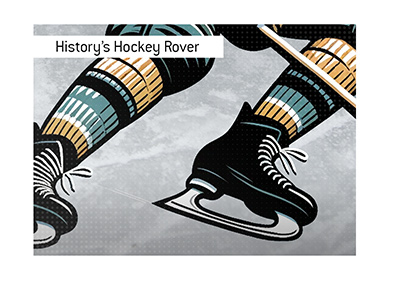"Rover" Position Was Used In the Late 1800s/Early 1900s
Published on November 11st, 2023 12:41 pm ESTWritten By: Dave Manuel
 There was a time when ice hockey leagues, such as the National Hockey Association and Pacific Coast Hockey Association, used to have a seventh player on the ice.
There was a time when ice hockey leagues, such as the National Hockey Association and Pacific Coast Hockey Association, used to have a seventh player on the ice. In this day and age, teams will put out five position players plus a goaltender.
It wasn't always this way.
In the late 1800s/early 1900s, leagues such as the NHA and PCHA would utilize the "rover", who would be the seventh player on the ice for a team.
-
The "rover" was much like a midfielder in soccer - they would help out on offense, as well as on defense.
They would literally "roam" the ice.
In this day and age, a "rover" would be similar to an offensive defenseman in the vein of a Quinn Hughes or Cole Makar.
Very capable on offense, but also having a job to do on defense.
The use of the "rover" would mean that there would be seven players on the ice for each team, which would create a bit of a crowded ice surface.
The "rover" position helped compensate for the general lack of skill in players, and the need for the position decreased as players got better and better.
-
The National Hockey Association got rid of the rover position in the early 1910s, though other leagues decided to keep the position for a number of years.
When the NHL formed in 1917, the league was formed without the "rover" position, and they would never use it.
The very first Olympic hockey tournament used the "rover" position in 1920, though subsequent Winter Olympic games would not use the position.
By the early 1920s, the position was being phased out everywhere, with financial constraints and a general increase in skill level being tagged as the reasons why the position was going the way of the dodo bird.



